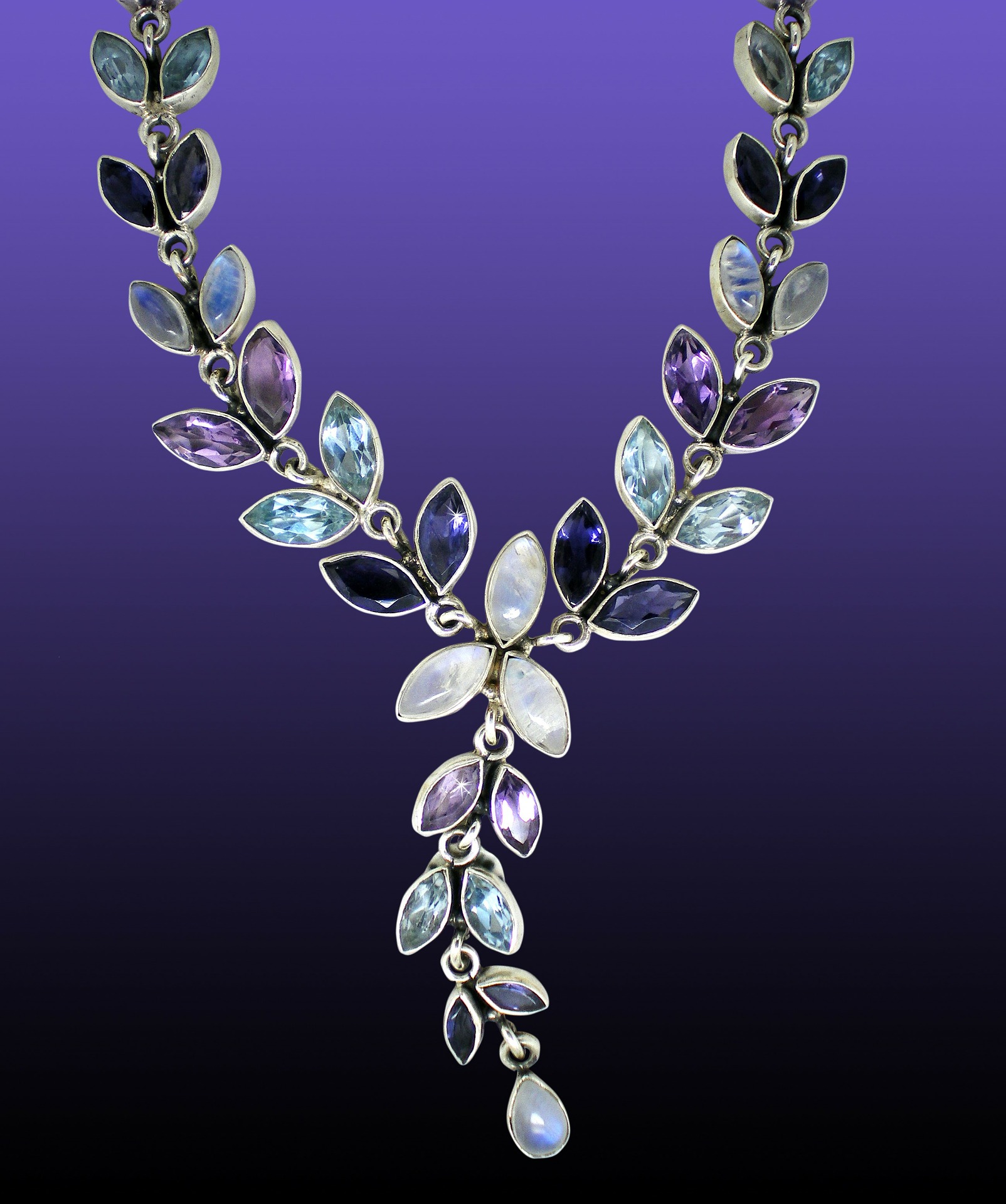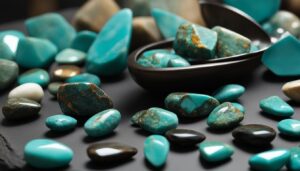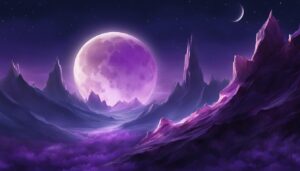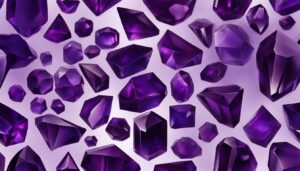A large number of feldspars are also found on the lunar crust, but potassium feldspar is very rare, so moonstones are unlikely to exist on the moon. Although we now know that moonstone is formed from feldspar, which is one of the most abundant substances on earth, it does not come from the moon. Moonstone is an ethereal stone, a kind of orthoclase, a mineral in feldspar, and it occupies about 60% of the earth’s crust.
The highest-quality moonstones are found in Sri Lanka. India also possesses a large quantity of moonstone. Several large countries around the world, e.g., Australia, Mexico, and Brazil, also have deposits, but these are smaller. Madagascar is known for its possession of rainbow moonstone.
As the name suggests, moonstone has a unique luster or shimmer that has captured the attention of humankind for millennia. Both in ancient India and in Rome, it was believed that the moonstone was mystically created by the rays of the moon. Traditionally classic moonstones, almost transparent and with a bluish tint, originally from Sri Lanka.
However, they are also found in the United States, Brazil, Australia, Myanmar, and Madagascar. Moonstones are also found in India, Australia, Myanmar, Madagascar, and the United States. The most popular blue moonstone comes from Bihar, located in central India.
Sources of Moonstone Varieties
The rarest form of moonstone is blue, the finest stones of which are said to be washed on the coast every 21 years (according to Asian myth). The most popular type of moonstone is the iridescent moonstone, which is an iridescent white or gray with a bluish sheen in the light, and very high quality specimens of these stones have a really real shimmer. The moonstone, which is found all over the world, is prized for its blue-white glow, a floating shine similar to moonlight.
The moonstone is translucent and is available in white and gray, as well as orange, green, blue, pink, brown and rainbow colors. Moonstone is a traditional Ayurvedic stone for women, thanks to the embodiment of the energy crystals of the Goddess and the female moon. The symbolism behind the moonstone crystal can vary from place to place, however, it is believed to represent divine feminine energy.
The Beauty and Significance of Moonstone
As mentioned earlier, Moonstone represents the balance of sacred and emotional, making it an excellent gem of harmony in your home. Other gems that complement moonstones include the protective power of obsidian, the shimmer of opal, the iridescent color of labradorite, and the tranquil vibration of amethyst. Moonstone is a powerful stone with various healing effects and can represent many things. It is a balance gem, birth stone, lucky stone, sacred crystal, exquisite jewelry and wedding gift.
The sparkling light of the moonstone is a special feature of the fascinating world of gems. The green moonstone is not as famous as the rainbow or the blue moonstone because it has no color change, but it is still a beautiful stone. It is a close relative of white moonstone, which is a feldspar mineral with various iridescent luster.
And all moonstone color options have a bluish tint underneath, which gives it a striking glow. The blue moonstone is transparent and crystalline with a floating blue hue on the surface. The most coveted stones have the deepest blue color. Historically, the most valuable colorless and transparent moonstones with a strong blue luster came from Myanmar.
Because of their unique beauty and limited supply, moonstones of this type and jewelry can reach exorbitant prices. When buying moonstone jewelry, you will encounter the most unexpected price differences. Like everything else we’ve covered so far, moonstone prices are varied and can appeal to different styles and budgets. Like most gemstones, moonstone comes in a variety of shapes, sizes, colors, and degrees of clarity.
Colorful Moonstone Mostly Comes from India
The various colors only come from India, while the white moonstone comes from other sources. In India, rainbow moonstone is mined in the southwest region, and blue moonstone is mined in Bihar in the central part of the country. Moonstone is a derivative of feldspar, and rainbow moonstone is closely related to labradorite.
Opalescence and discoloration are very beautiful and occur in both rainbow and blue moonstone varieties, however, the yellow-peach-white variety does not change much or at all on its surface. When the stone catches light, the reflection of the layers and inclusions creates a rainbow effect.
The white and blue shades of the stone may be more pronounced in the white moonstone variety, but the color is not so different that most people will notice it. The rainbow moonstone has a mottled milky hue that is the result of inclusions and layers of white orthoclase.
Iron Gives Moonstone Its Colors
However, as soon as traces of iron appear on the stage, the moonstones explode in a rainbow of colors. An even rarer occurrence is moonstone with an iridescent color scheme. This phenomenon occurs when white light splits into its spectral colors as it passes through a stone. When light penetrates between these thin layers, a familiar phenomenon seen in moonstone occurs called adularescence.
Geological and Geographic Origins Sri Lanka is the world’s most important source of high quality moonstone. Moonstone is also produced in significant quantities in Brazil, Myanmar and India. Moonstone deposits are found in Armenia (mainly from Lake Sevan), Australia, the Austrian Alps, Mexico, Madagascar, Myanmar, Norway, Poland, India, Sri Lanka [5] and the USA.
A Brief Synopsis of Moonstone Locations
Moonstone is found in Sri Lanka, Myanmar, Madagascar, Brazil, Australia and India. Moonstone was mined in Madagascar, Australia, Brazil, Sri Lanka, Mexico, Germany, Switzerland and India. Moonstone is mined from many remote corners of the globe, from the tea terraces of Sri Lanka to the extravagant coasts of Madagascar, the lands of Aurora in Norway and the vast expanses of Australia.
Behind the mystical moonstone Despite the initial belief that moon stones fell from the sky, scientists have confirmed that the natural stone does indeed come from Earth and is found in Sri Lanka, Brazil, Madagascar, India, Germany, Tanzania, Mexico, Australia and the United States. States.
The soft water light and pearl white light of moonstone are the most synonymous aspects of its name, but there are many different varieties of this unique stone. Moonstone from Sri Lanka is the country of origin of classic moonstone, shining light blue against an almost transparent background. The best classic moonstone, transparent and colorless, with blue reflections, comes from Sri Lanka. Sri Lanka is the only blue moonstone producing area in the world, and blue moonstone is the rarest and most valuable species.
Indian Perceptions of Moonstone
Moonstones are orthoclase feldspars of varying composition, usually with alternating layers of orthoclase and albite. Moonstones, with their inner shimmering reflections, have fascinated people for centuries, but they are not remembered as well as stones such as diamonds and rubies. In India, moonstones are also considered dream stones that bring wonderful night visions to the wearer.
Just like the ancient Indians, you can show love and romance with moonstones. Like many other people around the world, you can tap into the transcendental psychic powers of the moonstones. When it comes to spiritual healing, moonstones can strengthen the chakras.
The aspects of ourselves that we associate with femininity are believed to be activated and strengthened by the healing properties of moonstone crystal. Various gems are associated with love and romance, but moonstone has a particular impact on lovers and people in any positive relationship when it comes to meaningful relationships.




